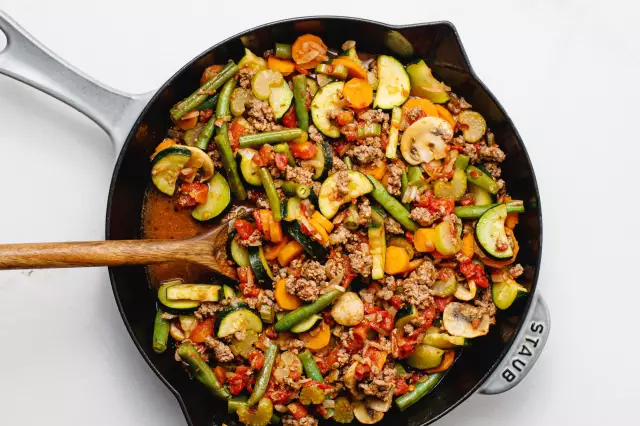- Author Rachel Wainwright [email protected].
- Public 2023-12-15 07:39.
- Last modified 2025-11-02 20:14.
Melted butter

Ghee is a product of butter processing by removing water, protein components and lactose from the feedstock. In fact, ghee is concentrated butter, with a minimum of other components.
The process of home cooking ghee is technologically different from the methods used in the food industry. When preparing ghee at home, butter is heated in a deep bowl and left for half an hour in a liquid state over low heat or a water bath. The protein components of butter form a characteristic foam, which is removed with a slotted spoon or spoon, and excess water evaporates. Delicate housewives also filter the finished product through a fine sieve or a thick layer of gauze in order to remove the remaining foam, which inevitably remains when working with a spoon and slotted spoon.
Ghee is prepared industrially by centrifugation. The butter is gradually melted and separated into fractions, after which the butter is heated for some time in an airless environment to remove the remaining water.
In Kyrgyzstan, a specific method of making ghee from sour cream is used.
The benefits of ghee
Ghee is 99.8% fat. At the same time, the product retains the richness of the vitamin composition. Vitamins A, E and D are almost completely preserved during the preparation of ghee. By reducing the amount of water and protein components, their relative amount in the finished ghee increases.
The benefits of ghee can be conditionally divided into household and biological. From a household point of view, the benefits of ghee are indicated by its long shelf life. Unlike butter, ghee does not deteriorate for a long time. Its shelf life can be up to 15 months in a refrigerator or cellar. Ghee can be stored at room temperature for up to 9 months. This property was widely used by the South Asians, who, in fact, preserved all the main benefits of cow's milk in ghee.
The benefits of ghee for the body are reduced to its high energy value and rich vitamin composition. A small amount of ghee helps prevent osteoporosis and rickets, has a beneficial effect on metabolic processes and helps to maintain visual acuity at any age.
The harm of ghee
Do not forget about the possible harm of ghee. It is a very fatty product, and therefore digestive problems can be observed in people suffering from diseases of the digestive tract. Ghee puts additional stress on the pancreas and liver and can provoke an exacerbation of chronic diseases of these organs.

Also, do not forget about the dangers of ghee for people who are overweight. 100 grams of ghee contains 892 kcal, which is a very large amount. Ghee is not recommended to be consumed as an independent food product. It is best for frying, but even there it should only be used in small quantities.
The harm of ghee is also due to its high cholesterol content, which can negatively affect the health of people with metabolic disorders, as well as accelerate the development of atherosclerosis.
Ghee is an extremely valuable food product that has proven its right to exist with its long history. Its intelligent and careful use will expand any gastronomic horizons and improve the health of both adults and children.
Found a mistake in the text? Select it and press Ctrl + Enter.






